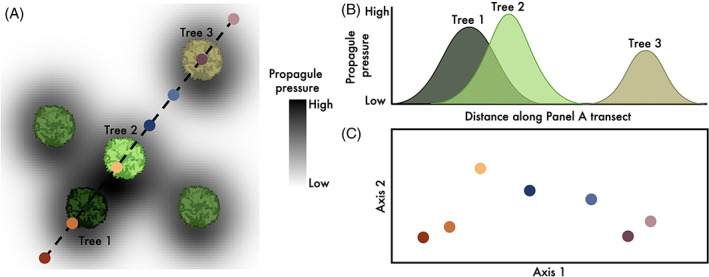FIGURE 2.

(A) A hypothetical landscape of microorganisms dispersing from multiple sources, here indicated as different colour trees. Tree colour represents unique tree species with distinct dispersal communities (Tree 1–3). Coloured points along a transect (dashed line) indicate the locations of microbial ‘traps’ that are placed on the soil surface to sample the dispersing community. (B) Representative dispersal kernels for three trees along the transect. Each tree has its own unique dispersal kernel. (C) Ordination of the community composition of the microbial trap samples from (A). If dispersal is limited and the sources differ in their microbial composition, then the samples will cluster based on geographic distance to the same dispersal source (trees).
